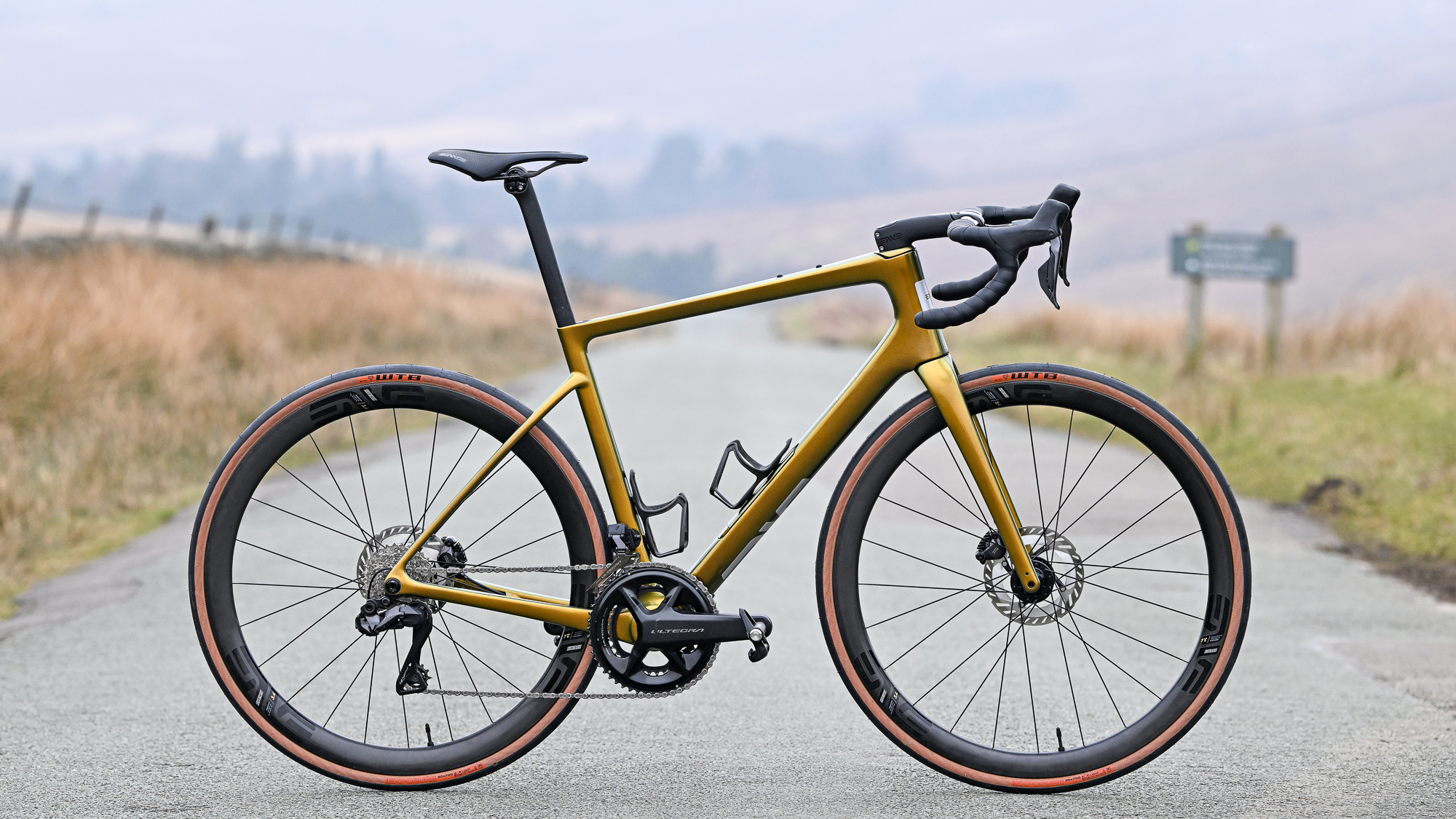Icons of cycling: the first Shimano STI gear shift system
Changing gears has never been the same since Shimano’s STI system hit the market 25 years ago

Photo: Graham Watson

When Shimano launched its STI (Shimano Total Integration) system, it did much more than just relocate and streamline the gear levers — it completely changed how people rode and raced bikes.
Until 1990, gear levers had been mounted on the down tube since the invention of the cable-operated parallelogram derailleur in the late 1940s. Certainly there had been options to clamp them to the stem shaft or plug them in at the handlebar ends, but racers preferred not to risk stabbing themselves in the groin or ribs if they fell off, so the down tube lever prevailed for 50 years.

Apart from indexed shifting (Shimano SIS), which arrived in 1984, where the lever clicked between gears eliminating the need to ‘feel’ the chain on the sprockets, there had been no real innovation in this area.
>>> Icons of cycling: Look’s revolutionary clipless pedals
Being in the right gear at the right time was simply one of the skills that had to be learned and practised. It was not possible to change gear in the middle of a corner or during a sprint; on a steep climb it was necessary to sit down to select a lower gear.
In the time it took to reach down and change gear, a rival turning a better-judged ratio could disappear up the road, so timing and technique were everything.
>>> Icons of cycling: Graeme Obree’s Old Faithful
Get The Leadout Newsletter
The latest race content, interviews, features, reviews and expert buying guides, direct to your inbox!
Road cycling had adopted new materials such as aluminium forged components and frame tubes, but in the late 1980s the real innovation was taking place in the exciting new sport of mountain biking. Shimano launched its Rapidfire system for off-road riding — ratcheted gear shifters mounted close to the brake levers that the rider could operate without taking a hand off the bar.

Then, in late 1989, Shimano began testing road STIs — using adapted Rapidfire internals — with the TVM team. Phil Anderson and Jesper Skibby were the test pilots and were followed around Europe by a Japanese Shimano engineer who would strip and test the STIs — which according to eyewitnesses looked so crude close up that they could have been handmade — after every race.
The production eight-speed Dura-Ace 7400 STIs that appeared in 1990 worked much like their modern 11-speed Dura-Ace 9000 counterparts — the brake lever swung inwards to move the chain up the cassette and an auxiliary lever behind it released cable tension allowing the chain to drop down the cassette.
>>> Icons of cycling: Campagnolo Tool Case
Campagnolo responded with its own dual-control lever system, ErgoPower. Like the Shimano STIs, Campag’s new shifters were bulbous and for many nowhere near as pretty as the C-Record brake levers they replaced.
But there was no going back: down tube levers were already an anachronism, STI-powered racing had arrived and cycling had changed forever.
This article first appeared in the June 11 edition of Cycling Weekly

Thank you for reading 20 articles this month* Join now for unlimited access
Enjoy your first month for just £1 / $1 / €1
*Read 5 free articles per month without a subscription

Join now for unlimited access
Try first month for just £1 / $1 / €1
Simon Smythe is a hugely experienced cycling tech writer, who has been writing for Cycling Weekly since 2003. Until recently he was our senior tech writer. In his cycling career Simon has mostly focused on time trialling with a national medal, a few open wins and his club's 30-mile record in his palmares. These days he spends most of his time testing road bikes, or on a tandem doing the school run with his younger son.
-
 ‘Being tough is doing whatever it takes to keep moving’ - 51 weeks after losing his leg, one rider returned to finish the race that wasn’t
‘Being tough is doing whatever it takes to keep moving’ - 51 weeks after losing his leg, one rider returned to finish the race that wasn’tWhen wildfires cancelled Mid South, Jacob Keen charted his own course—and found something bigger than a finish line.
-
 ENVE Fray - the ultimate all-road option?
ENVE Fray - the ultimate all-road option?The ENVE Fray makes a good case for itself being the best all-road bike, but does it make sense?